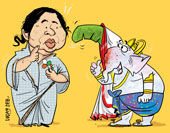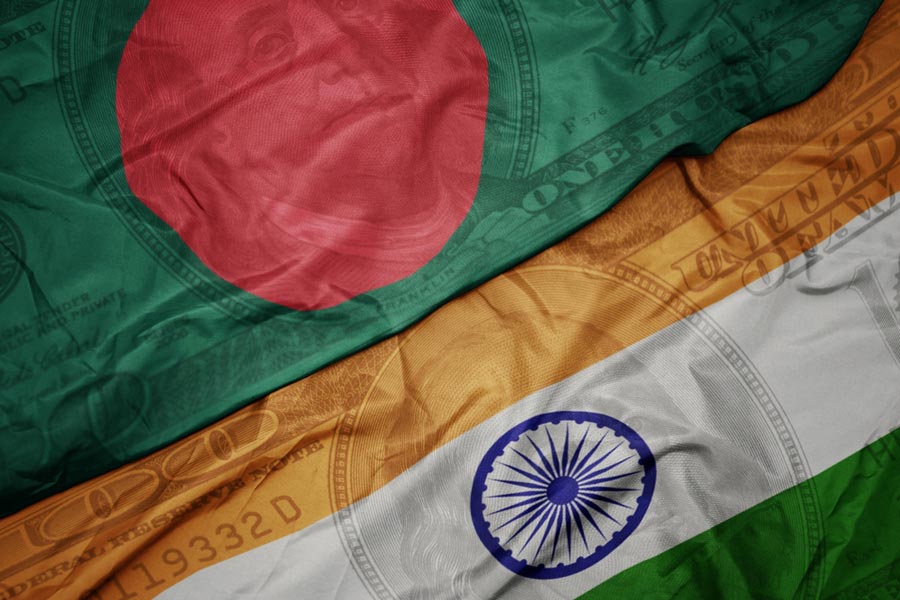 |
Mamata Banerjee could replace her party symbol of the two childish, if cute, flowers with one of Ma Durga’s family members.
There she stands, a diminutive figure among the first family of gods, meekly, almost stooping, draped in a red-bordered white cotton sari that is no less modest than the Trinamul chief’s crumpled dhanekhali, at the feet of Lord Ganesha, on his right. Her face cannot be seen, covered by the sari-edge pulled low into a deep, respectful ghomta. On closer scrutiny it is revealed that she has no face at all.
Her slightly bent figure exudes stillness, acquiescence and submissiveness, an ability to render herself invisible almost — qualities that Manu, the ancestor of Hindus, would appreciate in a wife, though he wouldn’t speak in English. But then she is a wife.
She is Kolabou, the flamboyant elephant-god’s plain plantain-wife. Or is she? The lady seems to be in disguise.
Kolabou began life as Nabapatrika, the branches of nine trees strung together by a length of the aparajita creeper, which are installed in the mandap on Saptami morning. These nine trees are rambha (banana/plantain), kachu (yam), haridra (turmeric), jayanti, bilva (wood apple or bel), darimba (pomegranate), ashok, maan (another variety of yam) and dhanya (paddy). The ancient texts add that the nine trees are manifestations of the goddess, or the goddess herself — respectively of Brahmani, Kalika, Durga, Kartiki, Shiva, Raktadantika, Shokarahita, Chamunda and Lakshmi.
Nabapatrika belongs to a time in the imagination of man when he felt divinity was present directly in nature, in the sun, the moon, the trees. He worshipped the great, universal force that ruled and controlled nature, knowing that in this lay good, the community’s, his own. Deities were embodied in idols later. But Hindus tend to conserve elements of their religion — so Nabapatrika stayed on even as the 10-armed idol of the mother goddess took centre stage.
But the collective appearance of the nine trees, renowned for their virtues, should itself have been taken seriously. Take plantain alone. Take its many qualities, not only medicinal: the leaves can be used to eat from; the fruit is a complete meal — Ayurveda says the roots are good for blood disorders and earache, the stem (thor) for blood pressure and is a delicacy, ditto for its flower (mocha), arguably a greater delicacy and more difficult to cook.
The qualities are so many of plantain alone that perhaps people over the years stopped there and named all the nine trees after it. And perhaps even among deities it is not nice for a woman to remain single — hence Nabapatrika became just Kolabou.
She was too cool to mind. She knew she was made of sterner stuff. Behind the guise of a common woman, she was total empowerment.
Isn’t that what the Trinamul chief aspires to be? So grab her as your symbol, Ms Banerjee, it is not yet too late, and let the artwork have an edge this time.
Besides, time has probably come for trees to be worshipped again. They can save mankind.










